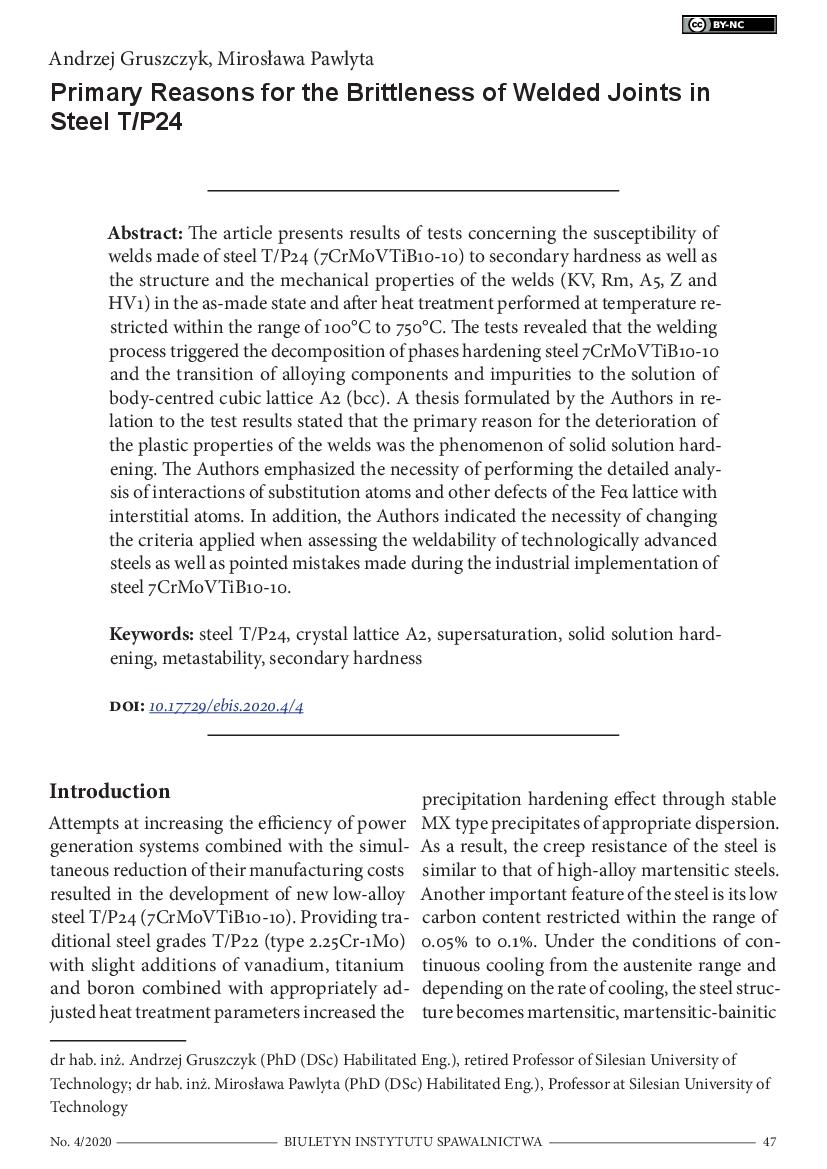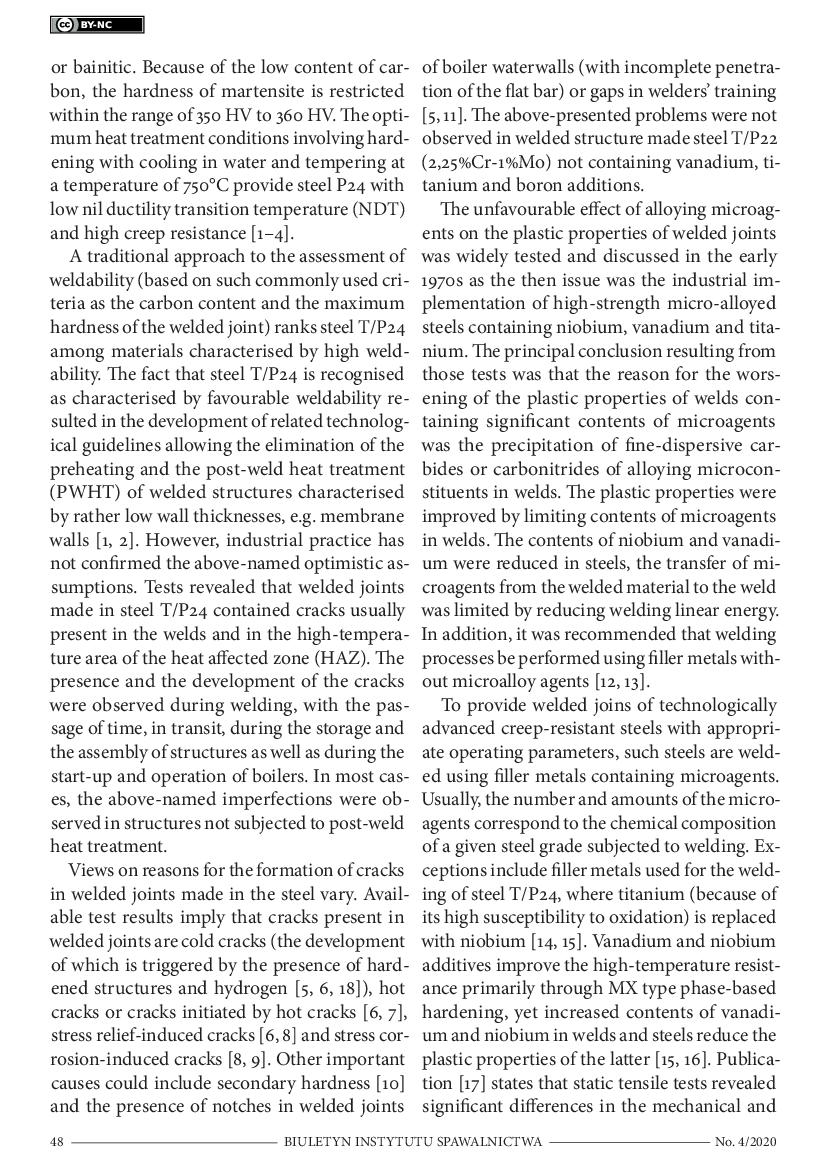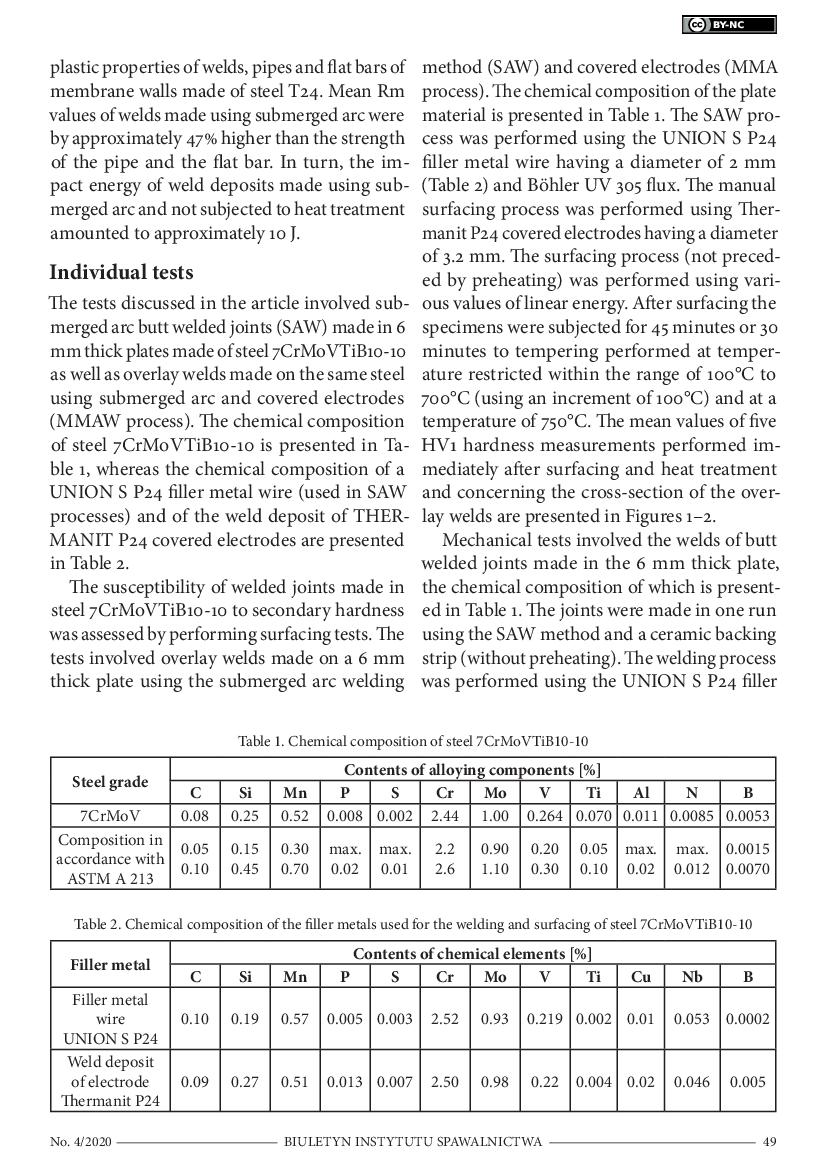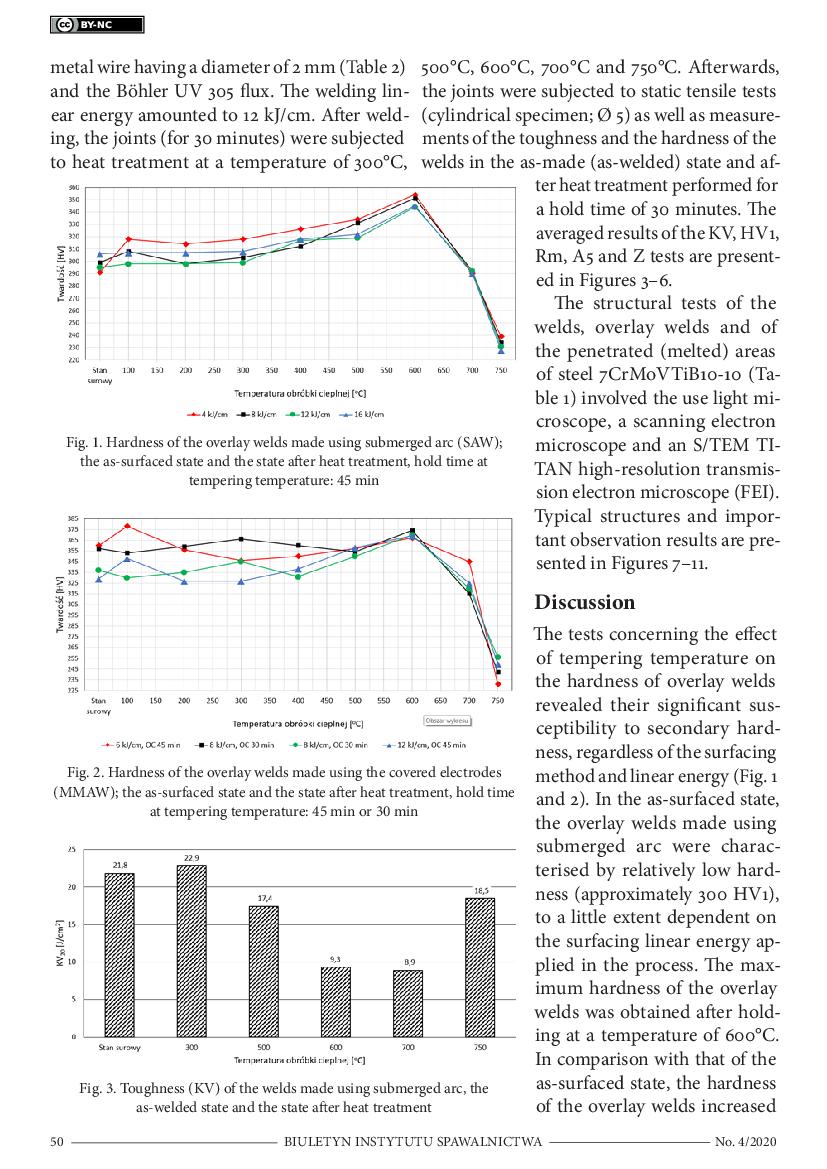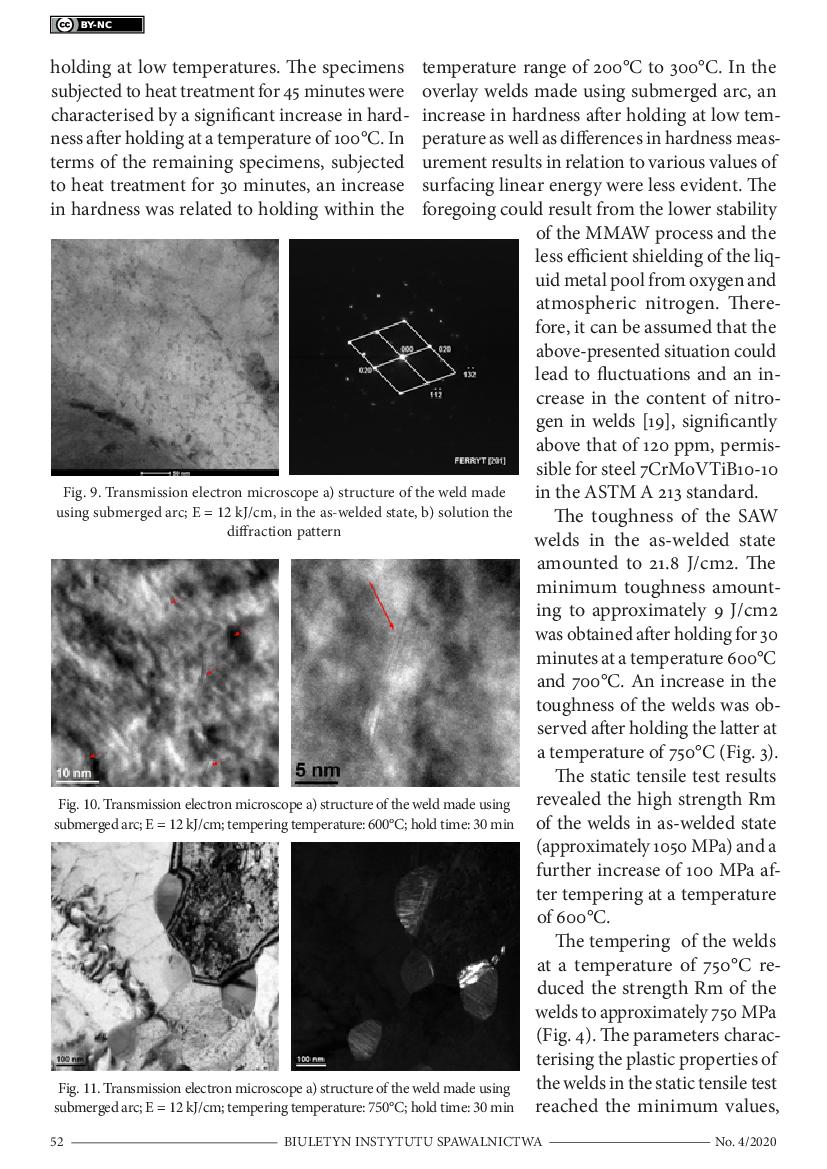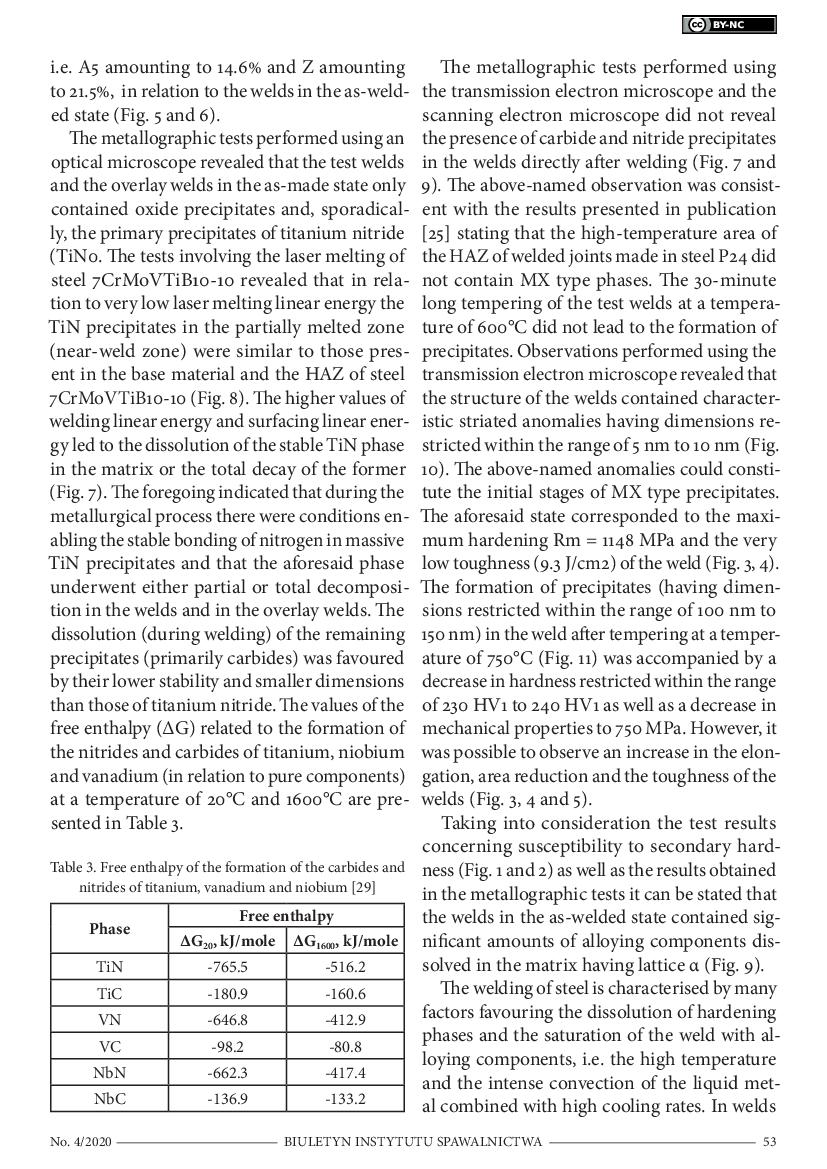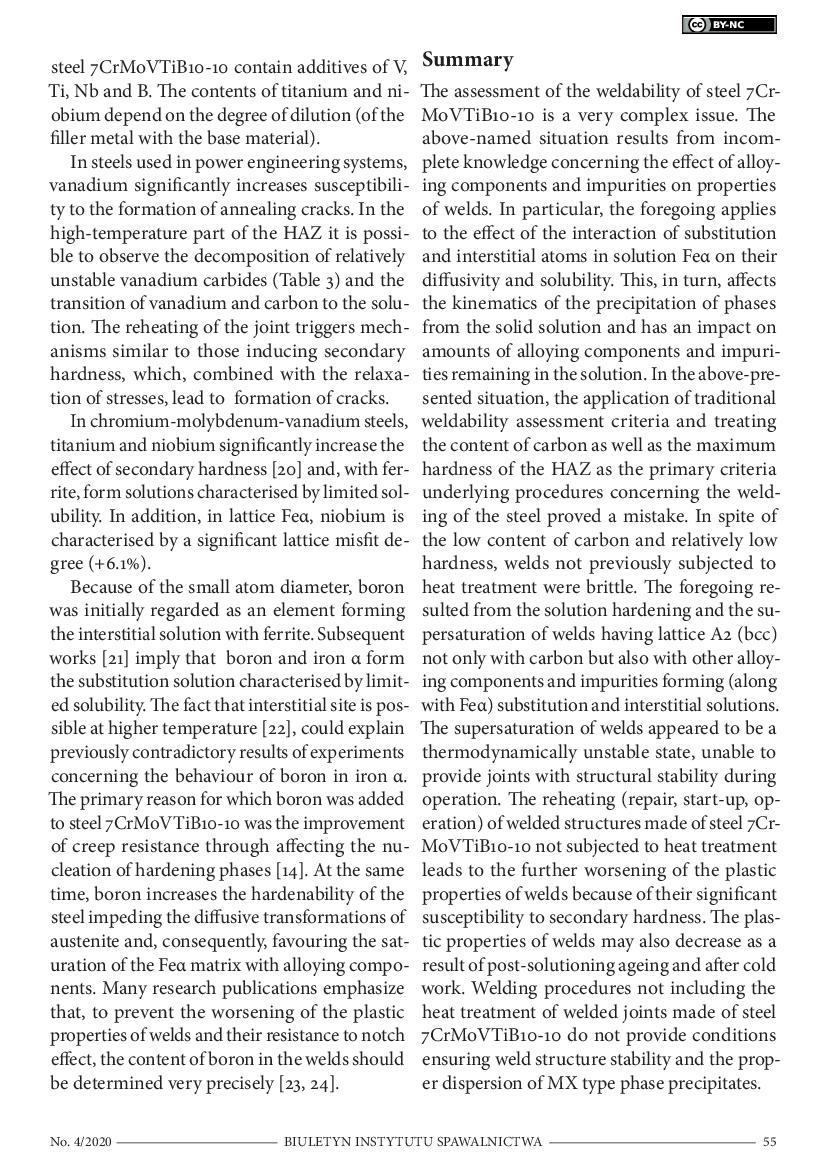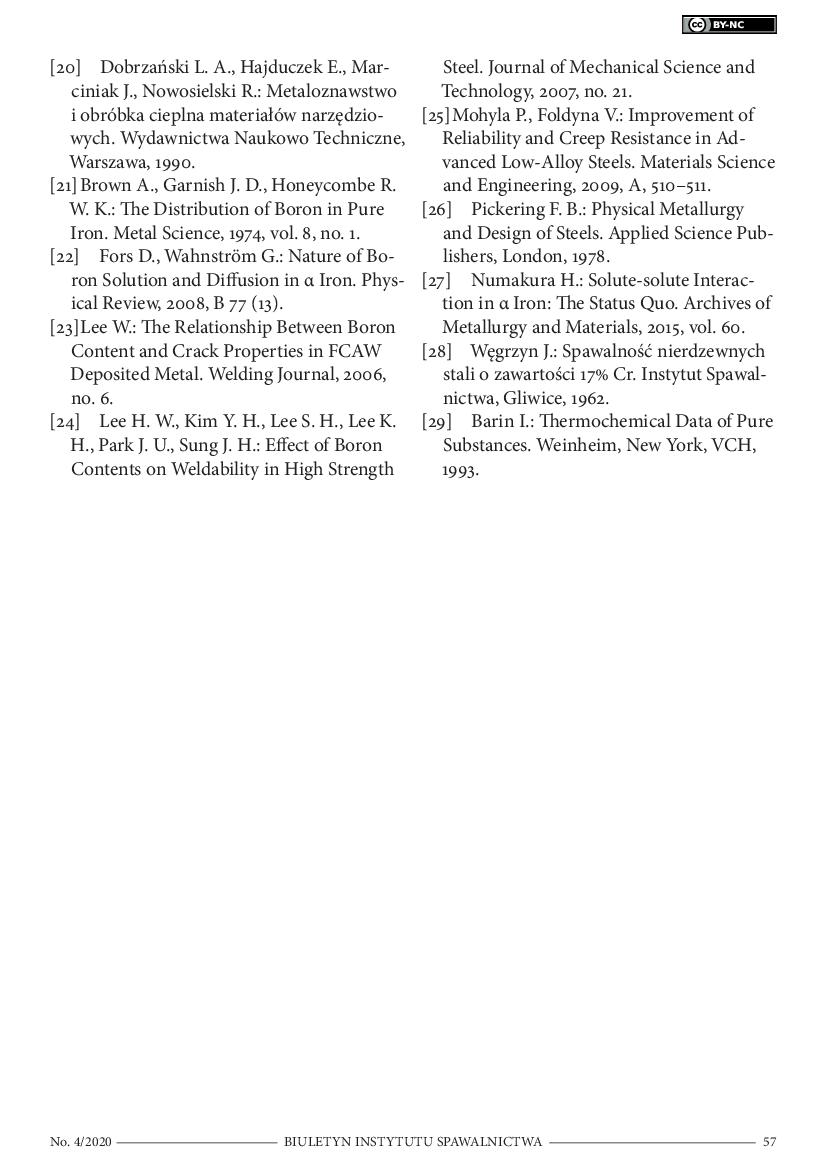Primary Reasons for the Brittleness of Welded Joints in Steel T/P24
The article presents results of tests concerning the susceptibility of welds made of steel T/P24 (7CrMoVTiB10-10) to secondary hardness as well as the structure and the mechanical properties of the welds (KV, Rm, A5, Z and HV1) in the as-made state and after heat treatment performed at temperature restricted within the range of 100°C to 750°C. The tests revealed that the welding process triggered the decomposition of phases hardening steel 7CrMoVTiB10-10 and the transition of alloying components and impurities to the solution of body-centred cubic lattice A2 (bcc). A thesis formulated by the Authors in relation to the test results stated that the primary reason for the deterioration of the plastic properties of the welds was the phenomenon of solid solution hardening. The Authors emphasized the necessity of performing the detailed analysis of interactions of substitution atoms and other defects of the Feα lattice with interstitial atoms. In addition, the Authors indicated the necessity of changing the criteria applied when assessing the weldability of technologically advanced steels as well as pointed mistakes made during the industrial implementation of steel 7CrMoVTiB10-10.
doi: 10.17729/ebis.2020.4/4
 1 / 11
1 / 11
 2 & 3 / 11
2 & 3 / 11
 4 & 5 / 11
4 & 5 / 11
 6 & 7 / 11
6 & 7 / 11
 8 & 9 / 11
8 & 9 / 11
 10 & 11 / 11
10 & 11 / 11

